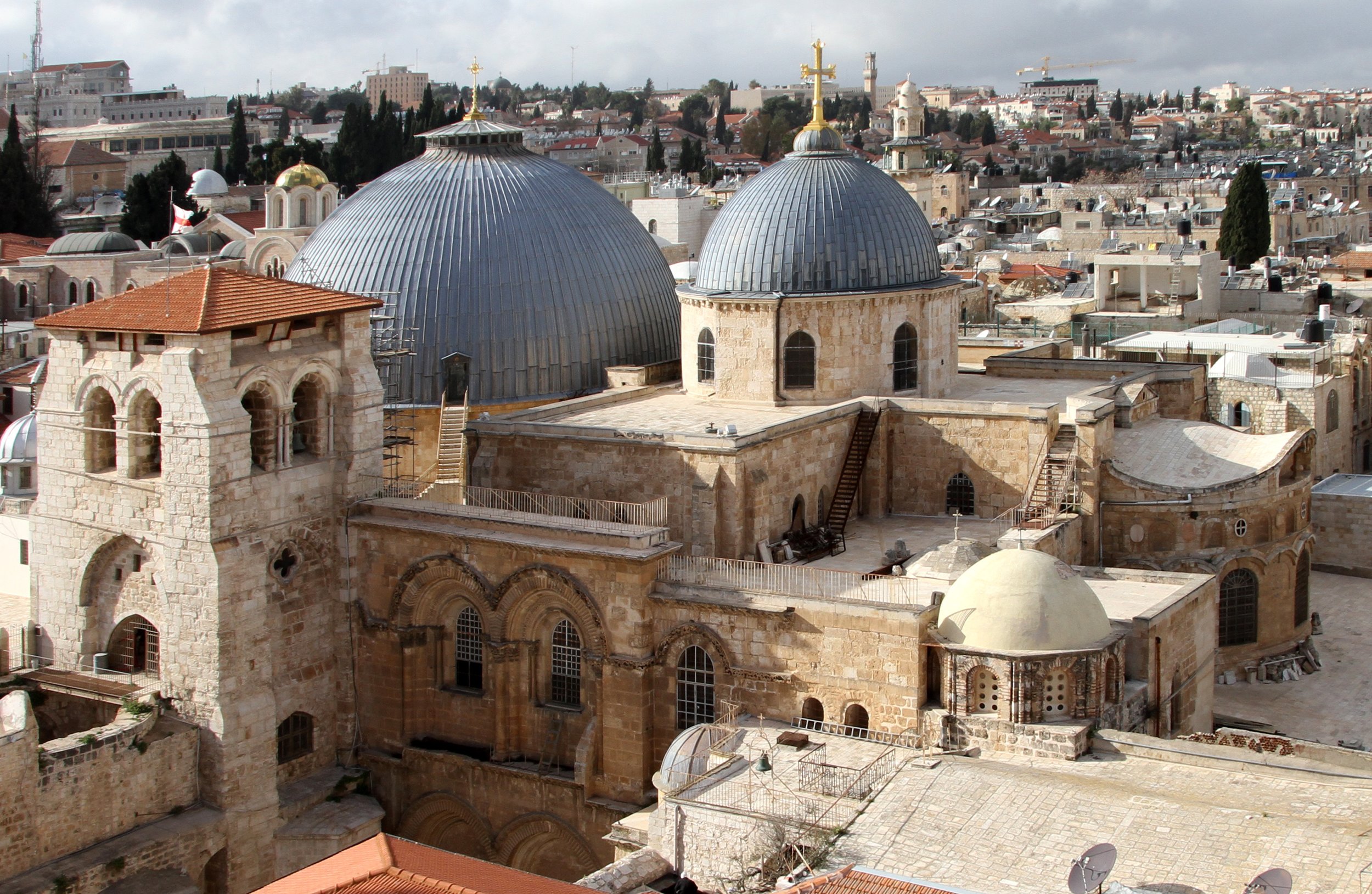Celebrating Eid-Al-Kabir: Easter in the Holy Land
The Church of the Holy Sepulchre
This Lent, we are bringing you a series of reflections from friends and partners in the Middle East showing how Lent is celebrated across the Bible lands.
We hope that this helps you feel united with our Christian sisters and brothers as we mark this special time of year. This week, we hear from Suheir of the Secretariat of Solidarity in Jerusalem about how Lent is celebrated in the Holy Land.
I am a born and bred Palestinian Christian belonging to the Greek Orthodox Church (which employs the Julian calendar) and had been living in East Jerusalem all my life. To me, as well as to all Palestinian Christians, Easter is the most important feast. The Arabic name for it “Eid-Al-Kabir” (the big feast) signals its importance.
THE LENTEN FAST
Coming from a religious family we observe all the Orthodox traditions and practices of Lent. Our fasting starts seven weeks before Easter Sunday (including Sundays and the Holy week) where we abstain from eating meat, fish, eggs, and dairy products throughout. Easter day is therefore a blessing to the family, especially the children, when we start eating the chocolate eggs and bunnies, the coloured eggs which we prepared during the Holy Week, the tsoureki (sweet easter bread) and the Arab round shaped delicacy that looks like Jesus’ crown of thorns and the sponge of vinegar “Ka’k u Ma’mul”. This delicious dish is made from semolina and filled with dates and nuts. All the family gathers for lunch, and together we enjoy a wide variety of delicious Arabic dishes - including stuffed marrows & vine leaves, roasted lamb, and musakhan – a dish of chicken cooked with sumac.
HYMNS AND WORSHIP
My favourite religious ceremony during Lent is the Akathist hymns chanted in our local parish Church, Saint Jacob’s. This beautiful Church stands next to the Church of the Holy Sepulchre in the Old City of Jerusalem.
I also love celebrating Palm Sunday, which starts with a Mass, followed by a procession of all worshipers in the church courtyard, with the children all dressed in their best colourful clothes carrying branches of palm decorated with all kinds and shapes of flowers and ornaments.
HOLY WEEK IN THE HOLY LAND
Holy Week which comes right after Palm Sunday is an intensive week of daily masses in the local parish church leading up to Easter Sunday. Early in the morning on Thursday, worshipers gather in the courtyard of the Holy Sepulchre to watch the Orthodox Patriarch of Jerusalem wash the feet of prominent priests, imitating Jesus washing His disciples’ feet. In the evening, a special mass is held in the parish church reflecting the crucifixion of Jesus Christ. On Friday evening at around 6pm we attend a church mass followed by a burial service – a coffin procession in the courtyard of the Holy Sepulchre is attended by hundreds of worshippers.
EASTER CELEBRATIONS
The biggest festivity at Easter is Holy Saturday or, as it is known in Arabic, “Sabt El Nour” (the Saturday of Light). This is a yearly miracle in which a Holy Fire emanates from the inside of the Rotunda which holds Jesus’ tomb in the Holy Sepulchre. The light is passed on to all the people in the church to light their own candles and take this light to their homes. The fire is also spread to all Palestinian cities and villages, as well as to a few Middle East and North Africa countries like Jordan, Lebanon, and Egypt, and Orthodox majority countries like Greece and Russia.
In normal times tens of thousands of Palestinians and pilgrims from all over the world attended these celebrations. However, in the last 15 years or so, due to Israeli restrictions on Palestinian movement and worship, combined with a heavily militarized Israeli security presence in the Old City of Jerusalem, fewer people manage to reach the Holy Sepulchre to join in these celebrations.
We attend the Saturday evening mass at Mar Elias Church on the way to Bethlehem. It starts with gospel reading of 15 minutes outside the closed church door. The priest then knocks on the door with a mallet demanding entrance. A person inside asks “who is the King of Glory” and the priest replies “the Lord, Strong & Mighty”. The door is opened, and the worshipers enter the church to pray. The huge church lamps are moved symbolizing the resurrection with the choir and people shouting in Arabic “Al Masih Qam, haqqan Qam” (Christ is Risen, He is Risen indeed) celebrating the “Hajmeh” (the procession of haste).
We hope this gives you an insight into what this most important celebration looks like in the Holy Land and wish you all a Blessed & Happy Easter.
By Suheir Khoury



